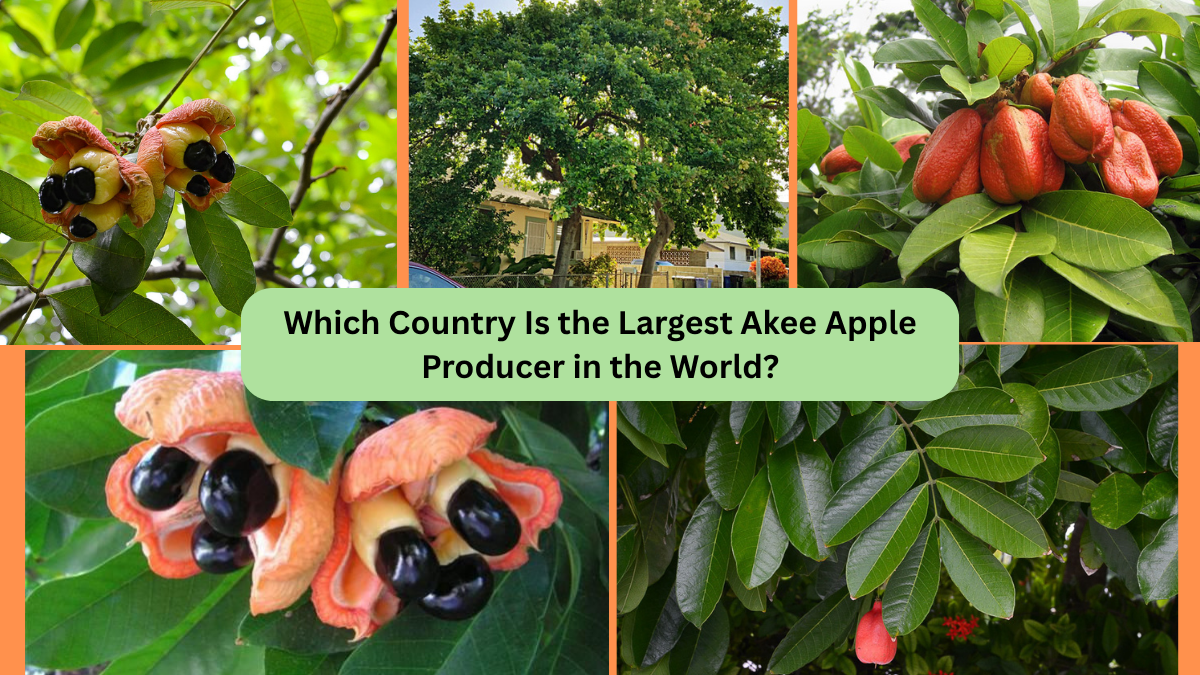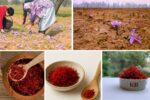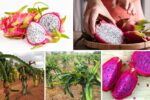The akee apple, scientifically known as Blighia sapida, is a unique and culturally significant fruit native to West Africa. It’s most famously associated with the Caribbean, especially Jamaica, where it holds the status of national fruit and is central to the iconic dish ackee and saltfish. Despite its African origins, the Caribbean region, led by Jamaica, has emerged as the world’s most important hub for akee apple cultivation and culinary tradition.
In this comprehensive article, we’ll explore the fascinating history, nutritional benefits, culinary uses, and most importantly, identify which country is the largest akee apple producer in the world.
What Is Akee Apple?
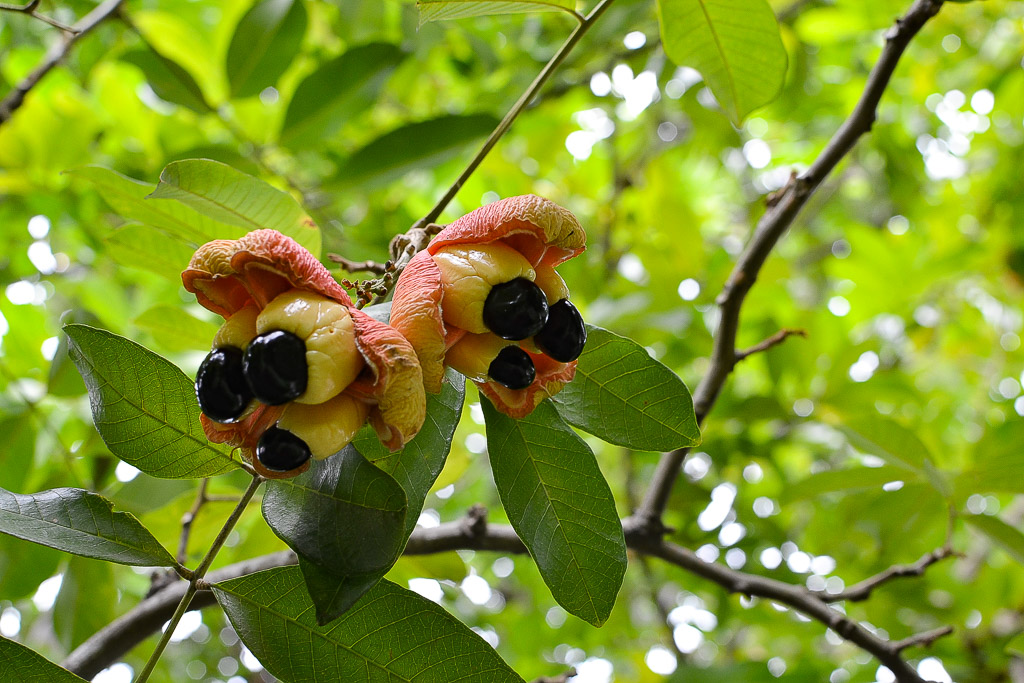
The akee apple belongs to the Sapindaceae family, which also includes lychee and longan. The fruit grows on evergreen trees that reach up to 15 meters in height. The akee apple starts off green and turns bright red or yellow-orange as it ripens. Once mature, the fruit naturally splits open to reveal three large, shiny black seeds encased in soft, creamy-yellow arils — the edible part.
It’s crucial to note that unripe akee contains toxic compounds, particularly hypoglycin A and B, which can cause severe poisoning known as Jamaican Vomiting Sickness. The fruit is only safe to eat when fully ripened and properly prepared.
Origins and Historical Significance
Akee apple is native to the tropical forests of West Africa, particularly Ghana, Senegal, Cameroon, and Guinea-Bissau. It was introduced to the Caribbean in the late 18th century, most likely via the transatlantic slave trade. In its new environment, the fruit thrived, finding favor among enslaved Africans who preserved their culinary traditions.
Over the centuries, akee became a cultural cornerstone in Jamaica, symbolizing resilience, heritage, and culinary innovation.
The Largest Akee Apple Producer in the World: Jamaica

Jamaica is the largest producer of akee apple in the world, both in terms of commercial production and cultural prominence.
Why Jamaica Leads in Akee Apple Production
1. Cultural Integration: Akee apple is deeply woven into Jamaica’s identity. The national dish ackee and saltfish is a celebrated symbol of Jamaican cuisine, eaten at breakfast, lunch, and dinner. Festivals, culinary contests, and tourism campaigns prominently feature the fruit.
2. Ideal Growing Conditions: Jamaica’s tropical climate, fertile soil, and year-round sunshine provide perfect conditions for akee cultivation. The trees flourish across the island, especially in St. Elizabeth, Clarendon, St. Catherine, and Manchester parishes.
3. Organized Farming and Processing: Unlike in its native Africa, where akee remains largely wild-harvested, Jamaica boasts organized plantations, smallholder farms, and processing facilities. The country has developed stringent food safety protocols to handle the fruit’s inherent toxicity.
4. International Exports: Jamaica is the only country globally permitted by the United States Food and Drug Administration (FDA) to export canned akee to U.S. markets, thanks to its established safety standards and processing methods.
Other Akee Apple Producing Countries
While Jamaica dominates global production, akee apple is cultivated in:
West African Nations (Ghana, Nigeria, Senegal, Guinea-Bissau): In its native range, akee grows wild and is harvested for local consumption. Commercial production is limited, and the fruit lacks the formalized processing infrastructure found in Jamaica.
Caribbean Islands (Haiti, Trinidad and Tobago, Barbados): Some islands have akee trees and traditional dishes but on a far smaller scale.
Southern Florida (USA): Introduced for ornamental and culinary purposes, though limited by FDA restrictions on fresh fruit due to toxicity risks.
Despite these scattered presences, none rival Jamaica’s production volume, cultural integration, or international trade.
Nutritional and Health Benefits of Akee Apple
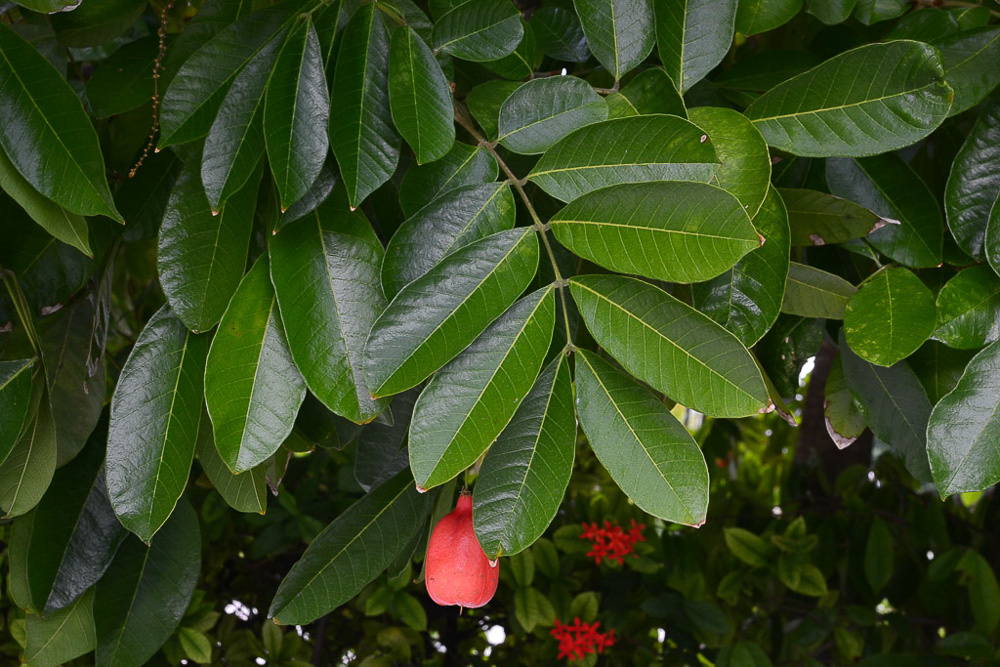
When properly ripened and cooked, akee offers impressive nutritional benefits:
- High in Healthy Fats: Particularly monounsaturated fats like oleic acid, supporting heart health.
- Rich in Protein: Contains essential amino acids.
- Abundant in Vitamins and Minerals: Especially vitamin A, zinc, and iron.
- Source of Antioxidants: Fights free radicals and inflammation.
Culinary Uses of Akee Apple
Akee’s buttery texture and subtle, nutty flavor make it a prized ingredient in Caribbean cuisine:
- Ackee and Saltfish: Jamaica’s national dish, combining cooked akee with salted cod, onions, tomatoes, peppers, and spices.
- Fritters and Patties: Used as a filling for savory pastries.
- Soups and Stews: Blended with meats and vegetables.
- Salads and Side Dishes: Often paired with rice, breadfruit, or dumplings.
The fruit must be blanched in boiling water before use to remove residual toxins.
Challenges in Akee Apple Production
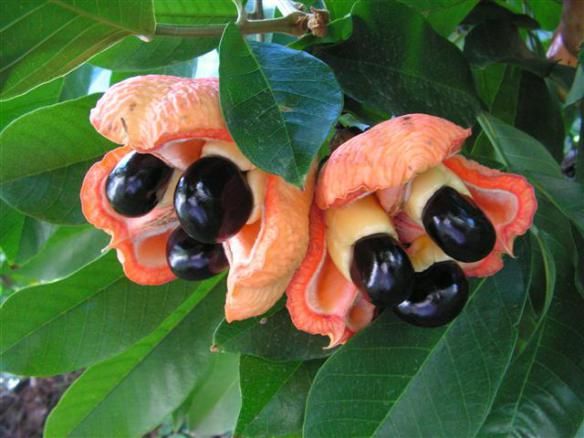
Akee production involves several complexities:
- Toxicity Risks: Unripe akee is dangerous, necessitating vigilant harvesting and preparation.
- Short Harvest Window: The fruit’s brief ripening period requires timely collection.
- Perishability: Fresh akee spoils quickly; most is canned for export.
- Limited Global Cultivation: Difficulty in managing toxicity deters widespread adoption.
Economic and Cultural Impact in Jamaica
Akee apple is both a cultural icon and an economic asset in Jamaica:
- Employment: Provides jobs in farming, processing, and hospitality sectors.
- Tourism: Featured in festivals, cooking classes, and culinary tours.
- Export Revenue: Canned akee is a valuable export to the U.S., Canada, and the U.K.
Its prominence in music, folklore, and visual arts reflects akee’s symbolic status as a representation of Jamaican heritage.
Future Prospects for Akee Apple
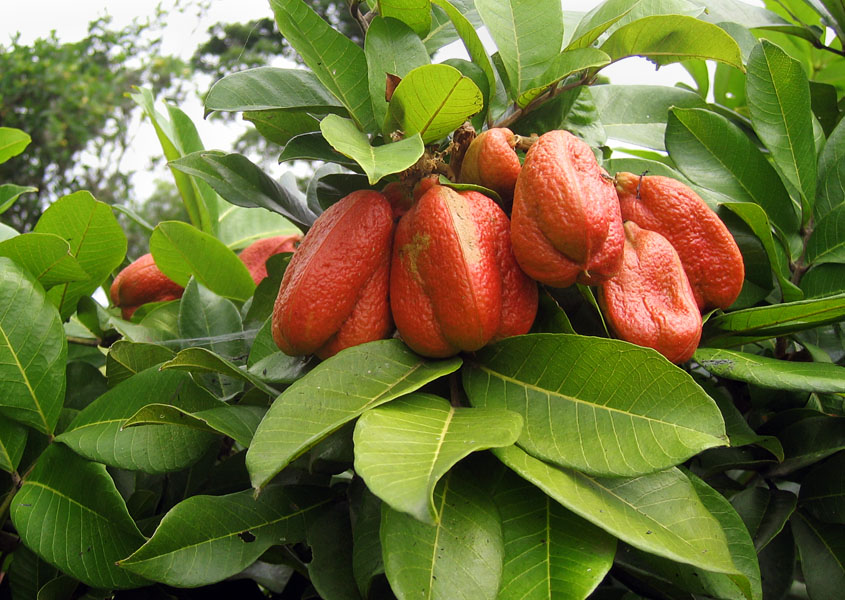
Jamaica aims to expand its akee industry by:
- Increasing Sustainable Cultivation: Encouraging farmers to plant more trees.
- Improving Processing Technology: Enhancing canning and freezing methods.
- Growing Export Markets: Tapping into health-conscious consumers seeking plant-based, nutrient-rich foods.
- Promoting Culinary Tourism: Showcasing akee in global food festivals and culinary experiences.
Conclusion
Jamaica’s fertile lands, rich culinary traditions, and robust food safety infrastructure have positioned it as the largest producer of akee apple in the world. While the fruit’s African origins remain a cherished part of its story, Jamaica has transformed akee into a national treasure and international delicacy.
From its starring role in ackee and saltfish to its presence in art and folklore, akee apple embodies the resilience and creativity of the Jamaican people. As interest in global superfoods and plant-based nutrition grows, akee’s unique flavor and health benefits offer promising prospects for broader recognition beyond the Caribbean.
